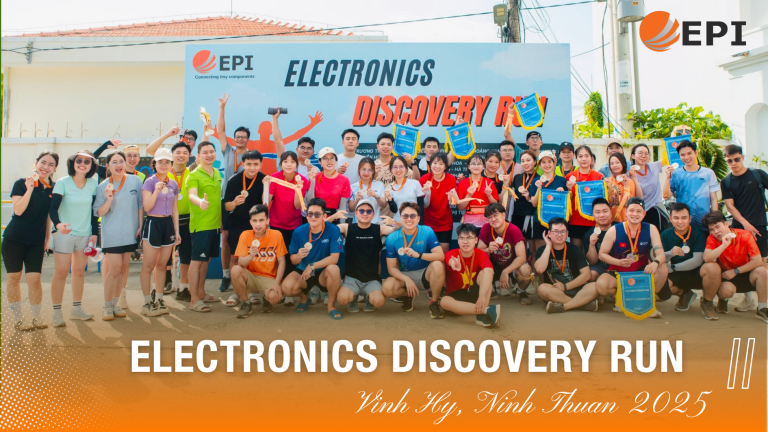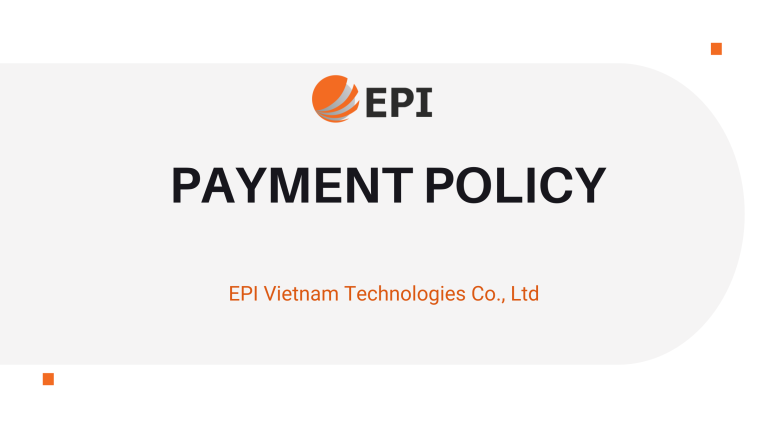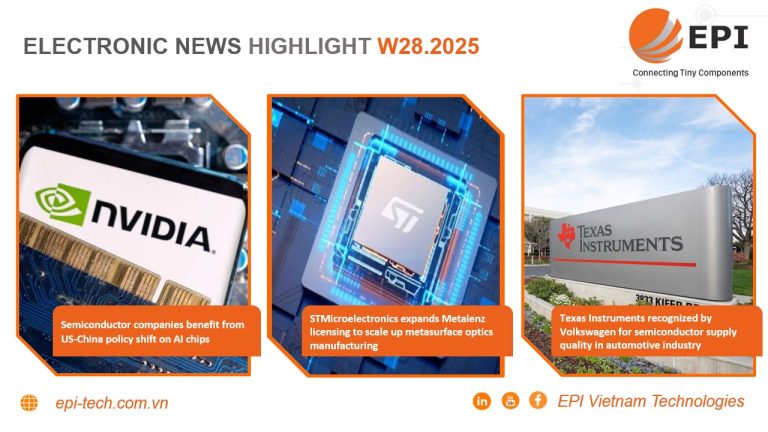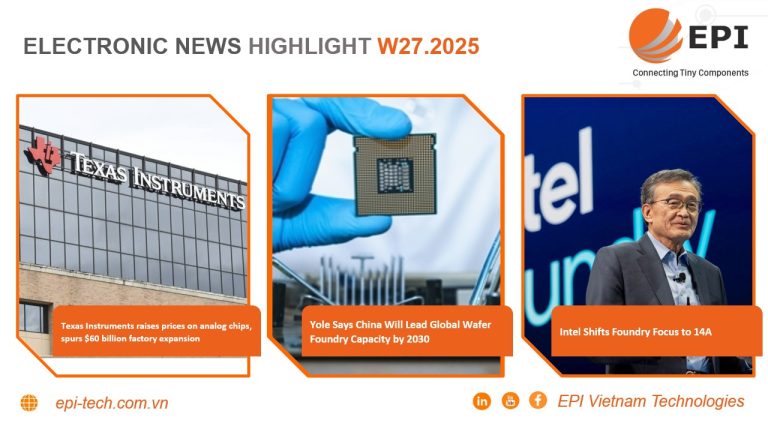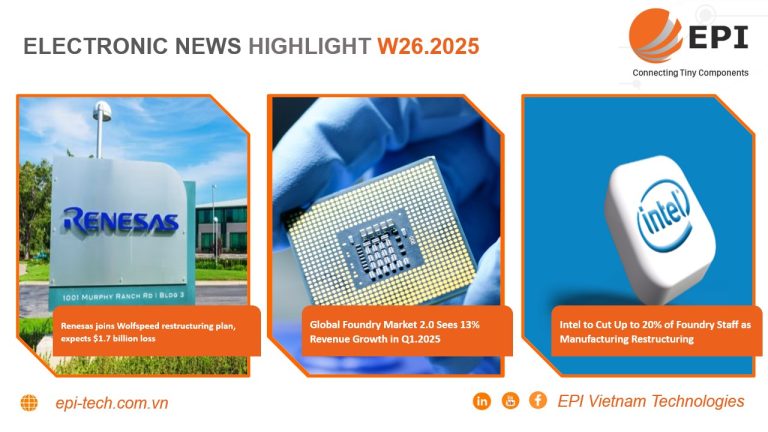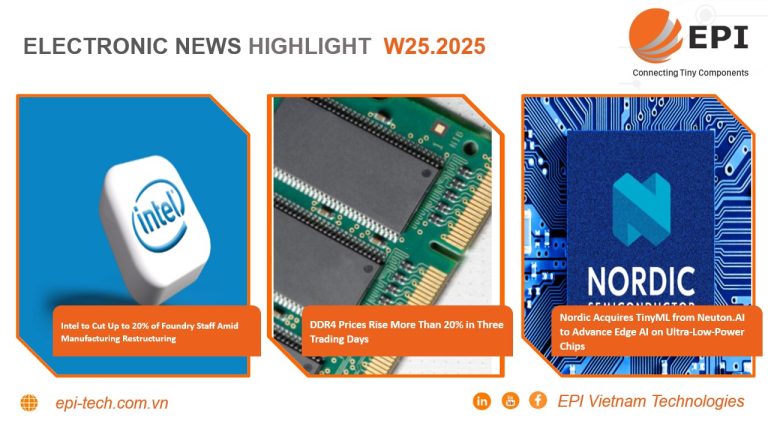ELECTRONICS NEWS HIGHLIGHTS W31.2023
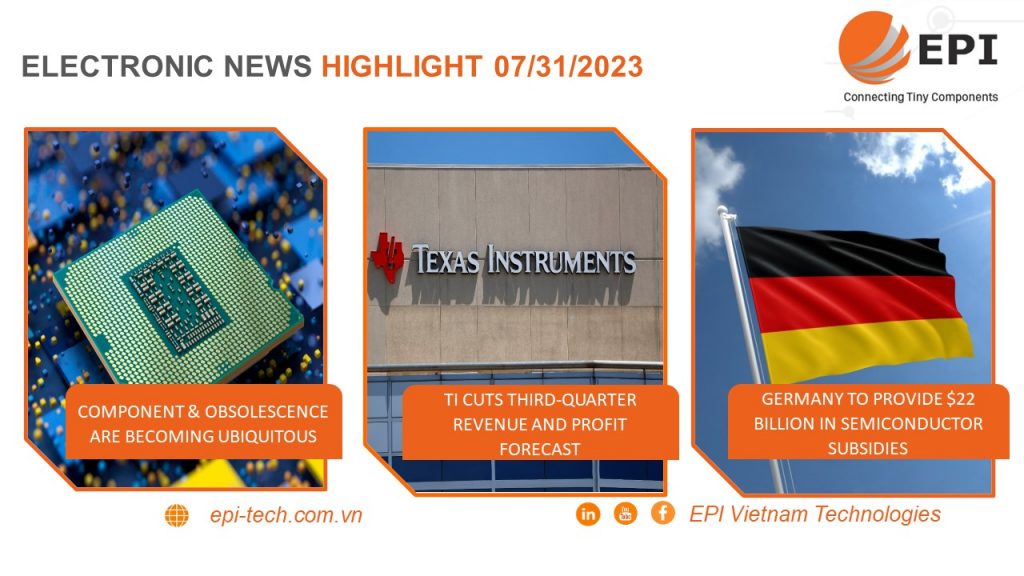
1. COMPONENT & OBSOLESCENCE ARE BECOMING UBIQUITOUS
Electronic components have become popular and are constantly evolving with the advancement of technology. This has driven the average life cycle of components down from 10 years to 7 years. This is expected to be a problem in very near future when the inventory of old technology products is not resolved.
Taking the case of electric cars, by 2022, according to the International Energy Agency’s Global EV Outlook 2023 report, electric vehicle (EV) sales have exceeded 10 million units. Worldwide, around 14% of cars sold are electric, compared with just 9% in 2021 and less than 5% in 2020. The report predicts that by 2023 there will be 14 million electric vehicles sold. out, up 35% from the previous year. Because of all-electric vehicles, demand for semiconductors has also increased sharply, such as the Ford Mustang Mach-E, which uses nearly 3,000 chips. This has pushed component manufacturers to quickly innovate and develop new components that are competitive in both quality and price to dominate the market. This has led to a 30% increase in obsolescence in the components industry. If not managed well, the costs incurred such as storage, old production lines and labor will be significantly wasted in the production plants.
In that context, the role of component distributors becomes even more important. Anticipating customer needs, building distribution systems, managing supply chains and estimating product lifecycles, are currently the best solutions proposed by distributors. This will help factories reduce the burden, just focus on production, instead of having to worry about product obsolescence.
Learn more: Components & Obsolescence are Becoming Ubiquitous
2. TEXAS INSTRUMENTS CUTS THIRD-QUARTER REVENUE AND PROFIT FORECAST.
Texas Instruments (TI) forecasts third-quarter revenue and profit to be below target due to a slow recovery in market demand and customer order cancellations.
TI’s director of investor relations said order cancellations happen a lot, mostly because customers want to keep inventory at a level that suits their needs.
Currently, industrial customers account for 40% of TI’s revenue. However, the revenue coming from here is also decreasing. Automotive became the only sector with growth. Besides, the Chinese market is accounting for 50% of TI’s profits and is the market that has the biggest influence on TI’s decisions.
Despite the demand crisis, Texas Instruments said it will continue to increase investment, even at the expense of margins, to support long-term demand and best prepare resources for a market recovery.
Learn more: TI forecasts dull third quarter on sluggish chip demand, China weakness
3. GERMANY TO PROVIDE $22 BILLION IN SEMICONDUCTOR SUBSIDIES
The German Economy Ministry said on July 25 that the government is preparing subsidies worth around 20 billion euros ($22 billion) to support the development of local semiconductor production in the coming years.
According to earlier reports, the German government has agreed to provide 10 billion euros in subsidies for Intel’s new factory, and is agreeing to provide about 6 billion euros in additional subsidies to companies such as TSMC and Infineon Technologies.
The total subsidy program suggests that at least 3 billion euros are still available for additional investment, which could benefit other companies active in Germany. GF has a sizable presence in Dresden, while German supplier Bosch also operates a chip factory in the city.
Learn more: Germany to provide $22 billion in semiconductor subsidies



 English
English  Tiếng Việt
Tiếng Việt 





